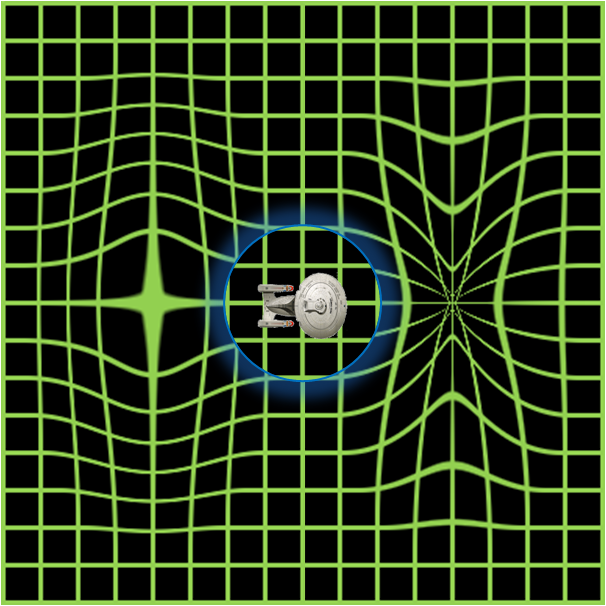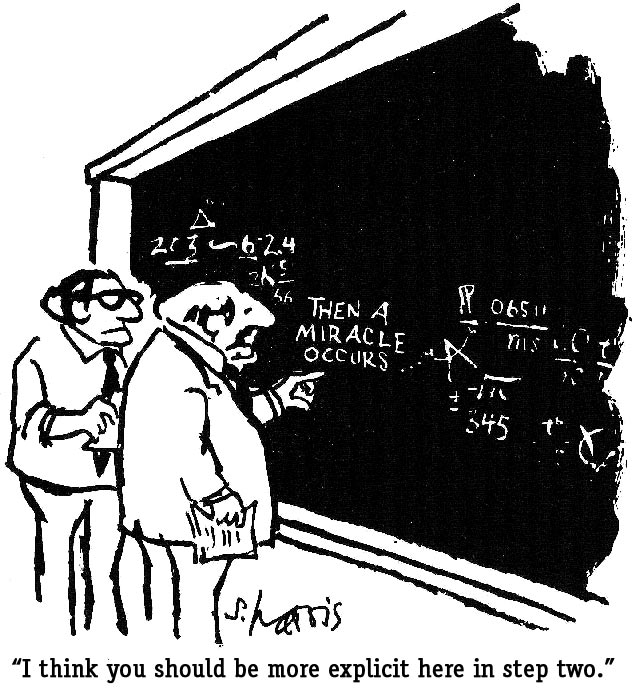welcome back, "trek wars" fans! i trust that my last rant, the first of three on science fiction's three biggest fictions (intergalactic relations, space travel and time travel), didn't leave you too demoralized, despite my sincere efforts to do exactly that. after all, we live among a potentially exciting galactic club with 100 million potential members, so it's a little shocking that nobody can actually get in the door. talk about "talk to the hand!"the problem, of course, is that everyone's too damn far away, nobody's got wheels and half the hood's underage anyway. sending out the invites alone, traveling at the speed of light, would take 15,000 years just to get to our first date. if we're lucky. forget about rsvps.
but what about faster-than-light travel? what about "warp drive"? after all, everyone knows nobody walks in l.a.!
well, it's certainly the most popular and most seriously considered way to roll: all you have to do is create a "warp bubble" around your ship that allows it to compress space ahead of it and expand space behind it, exactly the way it's shown in the "next generation" intro.
so ... just exactly how does one create a warp bubble?
... crickets ...
or in more clinical terms:
no scheme that may allow travel at warp velocity has yet been devised that has also been accepted by mainstream science.... they give no knowledge as to how a warp bubble might actually be established.
an approach that may be facilitated by our present level of technological advancement has yet to be proposed.
but figuring it out is just a matter of time, amirite?*if only* ...
by manipulating the extra spatial dimensions of string theory around a spaceship with an extremely large [translation: ginormous] amount of energy, it would create a "bubble" that could cause the ship to travel faster than the speed of light.
the energy requirements for some warp drives may be absurdly gigantic, e.g. the energy equivalent of 1067 grams might be required to transport a small spaceship across the milky way galaxy. this is orders of magnitude greater than the mass of the universe. we know gravity warps space, as demonstrated by the bending of light around our sun. unfortunately, even the sun, whose gravitational binding energy is measured (in joules) by a six-comma-whatever-whatever followed by 39 zeroes, manages to deflect light only one quarter of a thousandth of a degree, which should give everybody a gobsmacking clue to the scale of the ginormous (there's that word again!) additional forces needed to generate the amount of warping needed to make our "warp bubble", a bubble powerful enough to compress 15,000 light years of space into a weekend jaunt! all we need is a warp engine capable of doing the work of a ginormous number of suns!
but hey, we'll have the most powerful fuel available in the universe — antimatter — feeding the engines, amirite?
again, sorry to disappoint; antimatter's powerful, no doubt ... but it should be obvious by now that it just doesn't have the bang we need. it's the law of diminishing returns, folks. we got the biggest bang for our buck sixty years ago when we figured out fission and fusion. compared to chemical energy, nuclear energy outperforms it by up to six orders of magnitude. but antimatter outperforms nuclear energy by only four orders of magnitude, not nearly ginormous enough to turn a one megaton ship into the gravitational energy-equivalent of a thousand suns. that's like an ant producing the power of a freight train!
and to the suffering bowels of the budget-conscious, antimatter does tend to give the bean counters indigestion:
antimatter is said to be the most costly substance in existence, with an estimated cost of $25 billion per gram for positrons, and $62.5 trillion per gram for antihydrogen. this is because production is difficult (only a few antiprotons are produced in reactions in particle accelerators), and because there is higher demand for the other uses of particle accelerators. according to CERN, it has cost a few hundred million swiss francs to produce about 1 billionth of a gram (the amount used so far for particle/antiparticle collisions).
... which, with no way to store it, tends to make it a little hard to come by:
assuming an optimal conversion of antiprotons to antihydrogen, it would take two billion years to produce 1 gram or 1 mole of antihydrogen ...
but "trek wars" fanboys and fangirls needn't succumb to dispair. the situation is actually quite encouraging if we can apply moore's law to problem: by doubling the production rate every two years, we'll have our first gram in only 60 years. in just another twenty years after that, we'll finally have our first kilo of the most expensive fuel ever pumped, and just in time for the machines to wipe us out.next rant: time travel.
Friday, October 23, 2009
the li'l engine that couldn't
Labels:
astronomy,
media,
pseudoscience,
science,
science fallacy,
science fiction,
snark,
star trek,
star wars
Subscribe to:
Post Comments (Atom)
















No comments:
Post a Comment